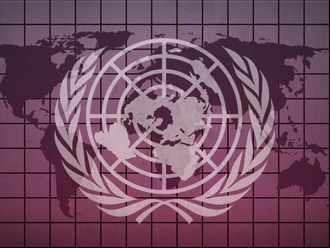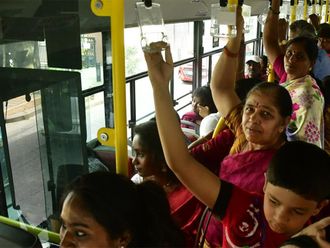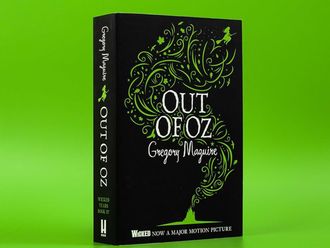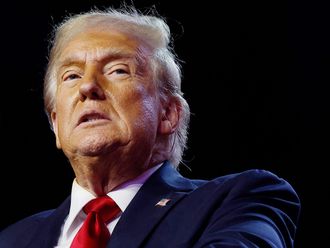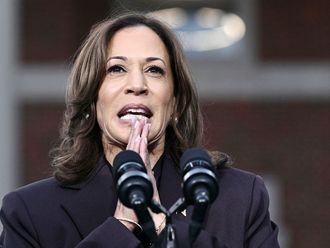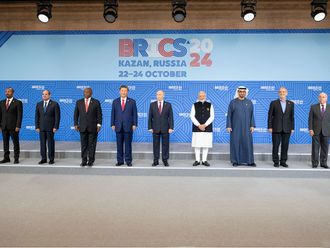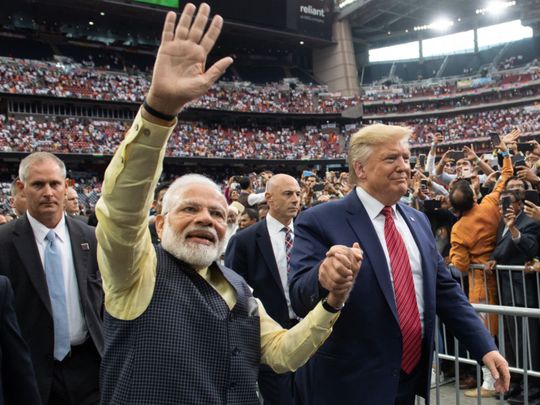
Indian Prime Minister Narendra Modi, as this goes to print, has had, on Sunday, a rousing reception at Houston, Texas. But it must be added that no reception for Modi is anything less than momentous. He is the fulcrum on which India’s destiny turns. At least that is what Modi and his party believe.
Everywhere he goes — according to one estimate, he is the most travelling prime minister India has had, having spent close to Rs20 billion (Dh1.03 billion) on foreign trips in the recent past — Modi likes to pitch and promote the idea of a New India. So new, in fact, many moan, scream and shout for Old India.
New India is digital. Everybody, Xi Jinping’s China-like, works hard to one man. The One Man thing is serious stuff. Among the many One things that India has toyed with recently include One River, One Uniform Code of Conduct, One Election, and One language (Hindi). The New India is dust-free, roaded and bridged, obeys traffic rules, wins loads of gold at the Olympics, looks like New York, and craps in clean loos.
Since the last seems a fair indication of the rest of the life indices, Modi has stressed sanitation. His great fan — and a big Bollywood star — Akshay Kumar recently made a movie called Toilet: a young village woman’s fight for decent defecation. Kumar and others like John Abraham have also made patriotic — a Modi obsession, if only because without nationalism, it is hard to make a movement, again China-like, out of most things — war movies.
These are great hits, of course. The Modi dispensation has built thousands of toilets. Quite a few of them though have no water connection. This is a dilemma, shall we say, for the consumer. One of the many, I may add, that the Indian faces stoically on an hourly basis on all fronts. To distort Borges, India is the interpolation of chance in the order of the universe.
Gandhi’s sufferance and love for the minorities even at the expense of the majority community are now seen underlined in red. It hasn’t paid dividends, according to the BJP.
Nevertheless, Modi has been successful in highlighting the need for sanitation in public life. Indeed recognising this, the Bill and Melinda Gates Foundation decided to honour him with an award. The secular and liberal India, who are probably among the hardest working pro-bono, round-the-clock firebrands in the employ of Mark Zuckerberg anywhere, has protested — along with three secular, pro-bono, firebrand, peace Nobel laureates.
All of it might be seen as a blow for open defecation except, of course, it is not. It is how the Indian liberal defines her individual and social worth. It lends her a nobility of purpose which is hard to come by in these times when, alas, everything is permitted and nothing is true. The blanket intolerance for Modi and what he stands for is genuine even if it runs the risk of being painless. And requisite, too, perhaps — if only as a check on what is oddly a one-party democracy.
But that begs the question. What does Modi stand for? Indeed, what is Modi? Last week, a minister described Modi as the Father of the Nation. This was on his 69th birthday. The original Father of the Nation is Mahatma Gandhi, whose great fan Modi remains. The conferring of the title was deplored as an act of expropriation. Yet, the honorific rings true. Because the nation has changed.
The Gandhian notion of India as Ramrajya — a tolerant Hindu State, run on Hindu deity Ram’s principles of truth, justice, and order — has been re-adapted to these binary times of black and white, good and bad; as a result of which the BJP’s idea of India is majoritarian with a vengeance.
Gandhi’s sufferance and love for the minorities even at the expense of the majority community are now seen underlined in red. It hasn’t paid dividends, according to the BJP. Which is roughly the line of RSS [Rashtriya Swayamsevak Sangh] as well. It is in this sense that the ‘rajya’ has changed. And Modi has fathered it.
In Identity: The Demand for Dignity and the Politics of Resentment, Francis Fukuyama talks about how cultural and political developments often precede economic development. That is happening in a big way just now in India. Culturally and politically, values and their representative bodies, institutions, are changing at a very fast clip.
Demonetisation, the half-cooked idea of digital India, clean trains (not yet arrived and already late) and toilets, and even the abrogation of Article 370 that seeks to ‘free’ Kashmir are massive shifts in the paradigm of the State. But the economy that might have sustained these changes haven’t yet arrived.
If that happens in the next couple of years or so, Modi in letter and spirit would become the Father of the Nation. Secular India secretly hopes a prosperous India does not materialise. A kind of sacred dread. Though it may mean more work for them in the drawing-room and more billions for Mark Zuckerberg, an up-and-running economy means the new notion of the State is justified.
Modi conducts himself as if that end is in sight. The shore, as it were. This is the reason why he is able to sell hope wherever he goes with conviction. He may be deluded. He may not be either. Just now it is hard to tell. Between hope and despair, people tend to opt for the former.
It is easier to stay the course that way. If any people are going through an epic struggle to realise what’s right by them, it is Indians. This is the sea in a storm. And when you are nearly drowning, how do you not clutch at a straw?
— C.P. Surendran is a senior journalist based in India


